Norse Legend Of Hero Sigmund And The Magical Sword In The Branstock Tree
Ellen Lloyd – AncientPages.com - Sigmund was a Norse hero famous for being the only one to pull out the enchanted sword from the ever-so-mighty Branstock tree mentioned in the Sigurdsaga that is part of the Volsunga Saga (Völsunga Saga).
"Sigmund's Sword" (1889) by Johannes Gehrts. Credit: Public Domain
The Branstock (Barnstokkr) tree was a large oak growing inside Volsungs great hall.
Sigmund had nine brothers and a twin sister named Signy, and he enjoyed their close relationship. Their parents were Völsung and Hljod.
One day, Siggeir, king of Gothland, came and asked for Völsung, his daughter's hand in marriage. Signy unsuccessfully tried to persuade her father not to marry her to the king. Völsung agreed though Signy did not want to marry Siggeir, knowing he was a treacherous and murderous king.
Branstock Tree - Guerber, Hélène Adeline (1895). Myths of the Northern Lands: Narrated with Special Reference to Literature and Art. American Book Company. Credit: Public Domain
At the wedding, a blue-cloaked man with one eye plunged a sword into the Branstock, an ancient oak. The man declared that the sword would be his gift to the person who could draw it out of the great oak tree. Then he left the great hall. This sword was said to have been placed there by the great god Odin himself.
Several warriors, including Signy's father, Volsung, tried to draw the weapon and failed. Sigmund, the tenth and youngest son, however, succeeded. It was said that Volund (or Wayland the Smith) made the sword, and the magic sword was later called Gram (Balmung or Mimung in German myth). The sword had the power to make the owner win all his battles.
There is also a tale of a magical sword named Grim in the Edda, which means "enemy."
The Gram sword is depicted on an old runestone standing on a hill just outside the Swedish city of Eskilstuna. According to a Norse legend, a dwarf named Fafner killed his father so he could steal a huge, valuable gold treasure.
Now, when Sigmund owned the magical sword, Siggeir was determined to get his hands on this weapon. He offered to buy Sigmund's sword. Sigmund scornfully rejected Siggeir's offer of gold. Furious and offended by the young man's reply, Siggeir was determined to destroy Volsung's family.
With the help of his shape-shifting mother, Siggeir managed to kill Völsung and his nine sons, but not Sigmund, because his twin sister Signy helped him escape.
The old man (Odin) places a sword into the tree Barnstokkr after entering the hall of the Völsungs. Credit: Emil Doepler, 1905 - Public Domain
To avenge their family's death, Sigmund and Signy then became allies. Sigmund hid in the deep dark woods, and Signy sent him whatever he needed from the palace. However, they both knew they could not defeat Siggeir on their own. With the help of a witch, Signy disguised herself as a völva, a female shaman and seer in Norse mythology. She managed to sleep with Sigmund and conceive a child named Singjötli. With Singjötli by his side, Sigmund avenged his family's death. They set fire to the palace and killed Siggeir and everyone except for Signy. Sigmund then returned to his homeland with Singjötli and became king. Later, he married Borghild and had two children with her, Helgi and Hamund. However, the marriage did not last long because Borghild poisoned Singjötli.
Sigmund married Hjordis, the daughter of King Eylimi, but that, too, turned into a disaster.
Hjordis had another suitor, King Lyngi, and when she married Sigmund, he became jealous and sought revenge.
King Lyngi waged war against Sigmund and his father-in-law Eylimi. In this battle, Eylimi was killed, and Odin, in disguise as an old beggar, fought Sigmund and shattered the sword to pieces, which left him vulnerable to his enemy's attacks. Sigmund was severely wounded, and on his deathbed, he asked his pregnant wife, Hjordis, to collect the shattered sword and give it to their son when he grew up. Their son was the famous dragon-slaying warrior Sigurd.
The Völsunga Saga is a legendary saga, a late 13th-century Icelandic prose rendition of the origin and decline of the Volsung clan (including the story of Sigurd and Brynhild and the destruction of the Burgundians). It is largely based on epic poetry. The earliest known representation of this tradition is in pictoral form as the Ramsund carving, Sweden, which was created c. 1000 AD. The origins of the material are considerably older, however, and it echoes real events in Central Europe during the fifth and sixth centuries. In this manuscript, the saga leads straight into Ragnars saga loðbrókar. The Middle High German epic poem Nibelungenlied is based largely on the old stories, which were commonly known in all of the Germanic lands from the early Middle Ages on, but reworks the material into a courtly medieval setting. Read more
The Völsunga Saga is a story about love and betrayal, adventure and tragedy, expanding over several generations. An unknown author wrote it from Iceland in the thirteenth century.
Updated on August 18, 2024
Written by - Ellen Lloyd – AncientPages.com
Copyright © AncientPages.com All rights reserved. This material may not be published, broadcast, rewritten or redistributed in whole or part without the express written permission of AncientPages.com
More From Ancient Pages
-
 Mystery Woman’s DNA Reveals Intriguing Relationship Between Neanderthals And Modern Humans In Europe
DNA | Dec 16, 2024
Mystery Woman’s DNA Reveals Intriguing Relationship Between Neanderthals And Modern Humans In Europe
DNA | Dec 16, 2024 -
 Kukulkan (Quetzalcoatl): Feathered Serpent And Mighty Snake God
Featured Stories | Feb 7, 2017
Kukulkan (Quetzalcoatl): Feathered Serpent And Mighty Snake God
Featured Stories | Feb 7, 2017 -
 Three Fun Paradoxes Created By Ancient Greek Philosophers To Puzzle Over
Featured Stories | Aug 28, 2024
Three Fun Paradoxes Created By Ancient Greek Philosophers To Puzzle Over
Featured Stories | Aug 28, 2024 -
 Oldest Indo-European Calendar Based On The Orion Constellation Is Engraved On A Vucedol Vessel
Artifacts | Jun 7, 2021
Oldest Indo-European Calendar Based On The Orion Constellation Is Engraved On A Vucedol Vessel
Artifacts | Jun 7, 2021 -
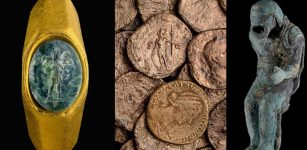 Magnificent Underwater Treasure Recovered From Two Ancient Shipwrecks Off The Coast Of Caesarea
Archaeology | Dec 28, 2021
Magnificent Underwater Treasure Recovered From Two Ancient Shipwrecks Off The Coast Of Caesarea
Archaeology | Dec 28, 2021 -
 First Neanderthal Footprints Discovered In Gibraltar Dunes
Archaeology | Feb 14, 2019
First Neanderthal Footprints Discovered In Gibraltar Dunes
Archaeology | Feb 14, 2019 -
 Geomagnetic Fields Reveal The Truth Behind Biblical Narratives
Archaeology | Oct 25, 2022
Geomagnetic Fields Reveal The Truth Behind Biblical Narratives
Archaeology | Oct 25, 2022 -
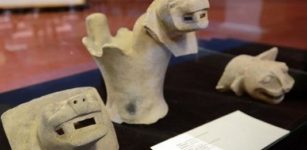 Lake Titicaca Reveals More Ancient Underwater Secrets
Archaeology | Oct 11, 2013
Lake Titicaca Reveals More Ancient Underwater Secrets
Archaeology | Oct 11, 2013 -
 Surprising Diversity Of Ethnic Groups In The US Virgin Islands Before Columbus – New Study
Archaeology | May 18, 2023
Surprising Diversity Of Ethnic Groups In The US Virgin Islands Before Columbus – New Study
Archaeology | May 18, 2023 -
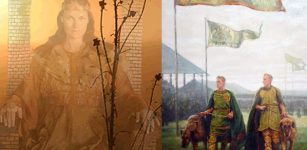 Tailteann Games: Ancient Irish Version Of The Olympic Games
Ancient History Facts | May 15, 2016
Tailteann Games: Ancient Irish Version Of The Olympic Games
Ancient History Facts | May 15, 2016 -
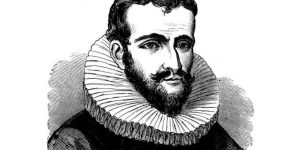 On This Day In History: Crew Of Discovery Launches Mutiny Against Captain Henry Hudson – On June 22, 1611
News | Jun 22, 2016
On This Day In History: Crew Of Discovery Launches Mutiny Against Captain Henry Hudson – On June 22, 1611
News | Jun 22, 2016 -
 More Greek Gods’ Heads And A Life-Sized Statue Of A Man Unearthed In The Ancient City Of Aizanoi
Archaeology | Dec 28, 2022
More Greek Gods’ Heads And A Life-Sized Statue Of A Man Unearthed In The Ancient City Of Aizanoi
Archaeology | Dec 28, 2022 -
 Ancient Scar Dragon Plaque And The Viking Boat To The Otherworld
Artifacts | Feb 4, 2016
Ancient Scar Dragon Plaque And The Viking Boat To The Otherworld
Artifacts | Feb 4, 2016 -
 DNA Study Of Ancient Humans Sheds Light On Human Evolution On The Tibetan Plateau
Archaeology | Mar 21, 2023
DNA Study Of Ancient Humans Sheds Light On Human Evolution On The Tibetan Plateau
Archaeology | Mar 21, 2023 -
 Mystery Of The Forgotten Explorers And Ancient Artifacts That Re-Write History Of North And South America
Civilizations | Apr 13, 2020
Mystery Of The Forgotten Explorers And Ancient Artifacts That Re-Write History Of North And South America
Civilizations | Apr 13, 2020 -
 Excavations At Okazaki Castle Reveal A 400-Year-Old Massive Unbroken Wall
Archaeology | Apr 16, 2016
Excavations At Okazaki Castle Reveal A 400-Year-Old Massive Unbroken Wall
Archaeology | Apr 16, 2016 -
 ‘Chac Mool’ – Intriguing Life-Size Figure Carved In Single Stone
Featured Stories | Mar 5, 2016
‘Chac Mool’ – Intriguing Life-Size Figure Carved In Single Stone
Featured Stories | Mar 5, 2016 -
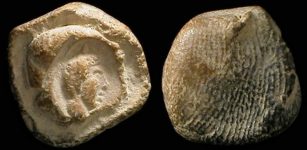 Fascinating Ancient History Of Fingerprints
Featured Stories | Jul 7, 2022
Fascinating Ancient History Of Fingerprints
Featured Stories | Jul 7, 2022 -
 Unexplained Phenomenon In Ancient Ireland – When Legends, Science And Real Events Collide
Featured Stories | Apr 19, 2018
Unexplained Phenomenon In Ancient Ireland – When Legends, Science And Real Events Collide
Featured Stories | Apr 19, 2018 -
 Ancient Egyptian Men Used Eye Makeup For Many Reasons
Ancient History Facts | May 9, 2016
Ancient Egyptian Men Used Eye Makeup For Many Reasons
Ancient History Facts | May 9, 2016




